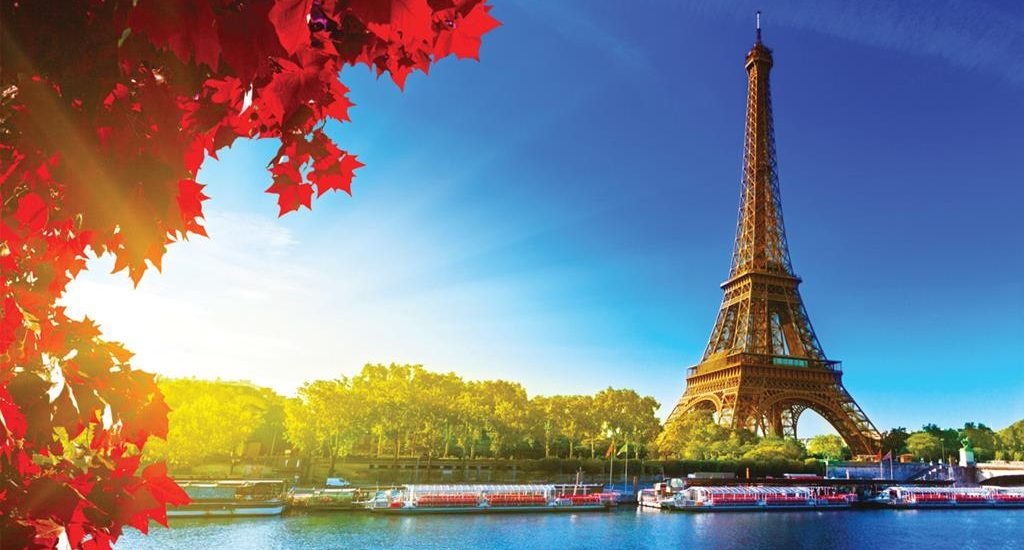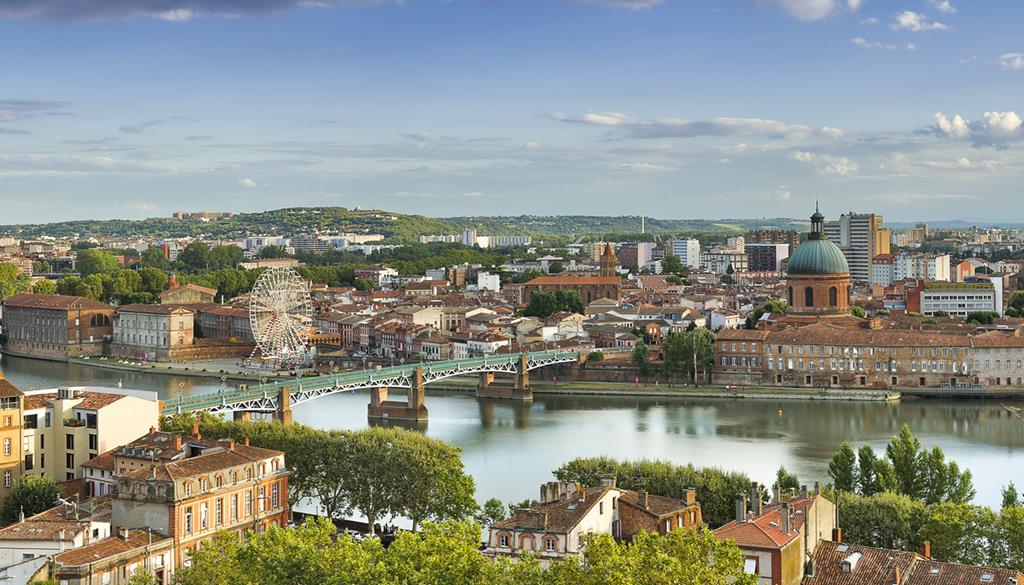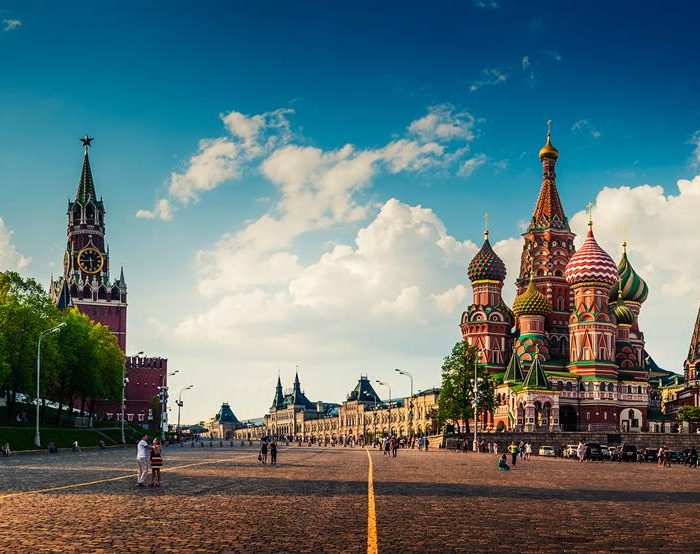Enjoy your stay in France by looking through the window of your car. If you can fly to Paris and out of Nice, that will be the best scenario. Nevertheless, you are free to live in Paris and go to one of the French cities for sightseeing. Everything depends on your opportunities and wishes. Keep on reading and you will find the best places to visit in France.
Traffic system in France
As far as we know, the best roads in the world are those of Singapore. Then goes France. The quality of road traffic is exceptional. There are a few toll roads in France. French roads even have their own website http://www.autoroutes.fr/index.htm. According to Statista.com, in 2008, France had the best quality of roads worldwide with a score of 6.7.
In the traditional sense of the word, there are no intersections in France. There is a circle with no traffic light, however, circling depends on the road signs. Thus, a driver should remain alert in order not to violate the rules and take the right exit.
The acceptable limit of blood alcohol content in France is 0.05% BAC. According to the new rules, drivers should carry a single-use breathalyzer. Otherwise, you will be fined €11. That should be a French breathalyzer. You can buy it at the gas station upon entry to the state (or at the drugstore and supermarket). It will cost you 2 to 5 Euro. Are you ready for the top 7 places to see in France? Here we go!
Paris
The capital of France is one of the most popular tourist cities in the world. The majority of people know about the City of Light and its numerous places of interest. France is still the most visited country in the world with 83 million foreign tourists in 2016, including 530,000 who came for the 2016 Euro Cup. If it’s your first car trip to Paris, you should, by all means, visit:
- The Eiffel Tower
- The Louvre
- The Arc de Triomphe
- The Sainte-Chapelle
- Notre-Dame
- The Palace of Versailles.
You can purchase a Paris Museum Pass to visit more than 70 museums and places of interest with no need to stand in a queue. Thus, you will also save money.
The Pompidou Centre is an exhibition and cultural centre in Paris. Despite the fact that the Pompidou Centre is not that well known, it is the third most visited sights in Paris after the Eiffel Tower and Louvre. Architecturally the centre is interesting because its engineering lines (pipelines, elevators) are moved out of the building and marked in different colours.
We recommend you to visit the Louis Vuitton Foundation museum. It has a collection of modern pieces of art. The building itself looks like a sailing ship. Immerse yourself in the history and visit a tomb of Napoleon and the Army Museum.
If you decide to go to Paris in March, you can see the Fashion week which is held all over the city.
It is always hard to find a parking lot in Paris, however, it’s not as bad as it seems. For example, in the heart of Paris, on the Île de la Cité which is situated lower than Notre-Dame, you can leave your car in the underground parking lot (needless to say it will be paid) and go for a walk. Statistics say that in 2015, nearly 30% of French people said they were very often delayed because of looking for a parking space.
The cost of underground parking in the centre of Paris starts from €3.50 per hour and approximately €25-35 if you are going to park 12 to 24 hours. Parking on the outskirts of Paris will be cheaper — €10-15 per day. There are toll-free parking areas at the French malls, however, only for the first two hours. On weekends and holidays from 7 p.m. till 9 a.m. as well as throughout August, you can park for free.
Free parking days are labeled with round yellow stickers on the nearest parking meter.
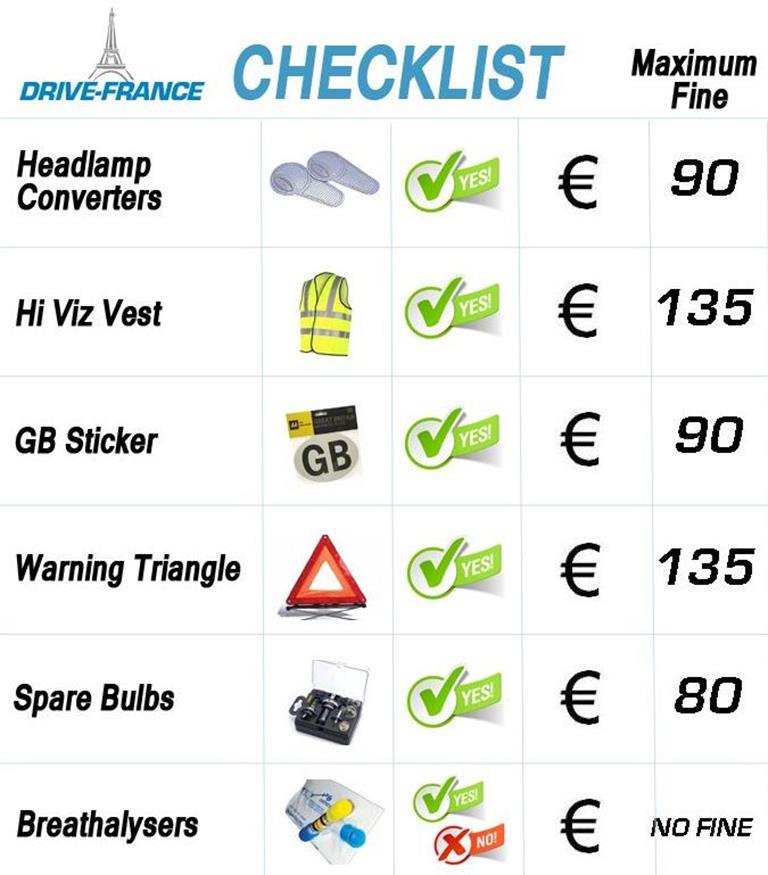
Headlamp Converters € 90
Hi Viz Vest € 135
GB Sticker € 90
Warning Triangle € 135
Spare Bulbs € 80
Breathalysers – no fine
Of course, you can see Paris, however, you can’t understand it if you know nothing about its history that has roots in the times of Julius Caesar.
These are the places you are to go by car:
- The Palace of Versailles (16 km away from Paris).
- Disneyland (32 km away from Paris). Parking for the guests is toll-free.
- Parc Asterix (30 km away from Paris). Parking costs €10.
- Stunning French outlets.
Marseille — the second capital of France
Marseille, a southern city on the coast of the Gulf of Lions, is the largest port and the second largest city in France. This city is a real diamond of France. Being founded 600 BC by Greek settlers, Marseille is considered to be the oldest city in France. At the same time, this is one of the leading industrial centers of France and, nevertheless, Marseille is proud of its unique historical heritage. Its bay studded with small islands and rocky tiny coves (Les Calanques) is considered to be a unique natural phenomenon. The hymn of France was called “The Marseillaise” to honour the victory of the Republicans who found support among the citizens of Marseille. During the Second World War, Marseille was a large Resistance center. In July and August, the weather in Marseille is very hot. Summer is the best season for the beach vacation. At this time of the year, the sea temperature reaches +25°C while the air temperature rises up to +27-30°C.
Mediterranean nature allows nobody to stay indifferent. Golden sandy beaches, picturesque scenery, cool gardens and, of course, the sea. You will come under a spell of Marseille.
At the Rhone River delta buffaloes and horses live. There is a natural park of Camargue. Wide lowlands of this region, also known as “the gypsy land”, create a striking contrast with the traditional townscape (by the way, the city itself stands on the hills).
A 2,600-year-old port of Marseille is truly a unique construction. The main street begins on this very port.
The highest point of Marseille is a hill where stands Notre-Dame de la Garde, a well-known religious sight and symbol of Marseille. This building in Romano-Byzantine style was built in the 19th century. The bell of the basilica is 2.5 metres high.
There is another place of interest that is known outside Marseille, the Château d’If. This fortress was one of the settings of Alexander Dumas’ novel “The Count of Monte Cristo”. Château d’If was built in the 17th century.
The most striking place to see in Marseille is the Marseille Cathedral. This tremendous building combines refinement and monumentality. Its cool, gruesome and fretted walls will tell you the secrets of the city.
Nice
Nice is a city and port in the south of France situated on the shore of the Mediterranean sea between Marseille and Genoa. Nice with a population of 340 thousand people is a large tourist centre and at the same time desirable place to visit in France.
The city was founded by Greek settlers in the 5th century BC and named after Nike, the ancient goddess of victory. In the 19th century, the French elite and royal aristocracy enjoyed spending time in Nice. Nowadays this city is more like a commercial centre and a mid-range resort: not that upscale and expensive if to compare with the neighbouring resorts. Nevertheless, thanks to the close proximity to the international airport and high-speed train Nice is the first resort on the French Riviera visited by millions of tourists.
Toulouse
The city lies on the Garonne river. 150 kilometres separate the city from the Mediterranean sea, and 250 kilometres from the Atlantic ocean.
Thousands of travelers visit this city each year to see the local sights. Toulouse is known as “The Pink City” thanks to the colour of the bricks used for building houses. There are three state universities in Toulouse, one Polytechnical Institute and a Fine Arts Grand School. Now more than 110 thousand students study there. Toulouse is the centre of aerospace industry (“Airbus” and “Ariane”), biochemical, electronic industries and information technology. In the beginning of the 90s, there appeared a metro in Toulouse. Moreover, the local citizens are very proud of the municipal stadium which is the major playground for the local football club.
The church of Saint Sernin has a belfry that rises over 110 metres above the city.
Wondering what else to see in Toulouse? Visit the Paul Dupuy Museum and the Cité de l’espace (City of Space). Toulouse is also famous for violets and perfume made of these flowers. Moreover, here you can buy violet jam and even liqueur. The Violet Festival is held here each year in February.
A sightseeing train drives around the city to show the tourists the landmarks of the city. The ride lasts for 35 minutes and costs €5. The train makes stops and you can get out anywhere you like and continue a trip on your own.
Bordeaux
Bordeaux is a city with mild climate and lush vegetation, Bordeaux still remains an important tourist centre thanks to many beautiful sights. Bordeaux is undoubtedly one of the best places to visit in France.
In the 3rd century BC, this wonderful city was called “The Little Rome”, and in the 8th century, it began to look like Paris.
People in Bordeaux speak only French. Those who speak English are not treated well.
There’s never a dull moment in Bordeaux: nice recreation areas, exciting excursions, ancient monuments will never make you sad. This is a perfect place for both the married couples with kids and the youngsters.
May to September is the best time to go to Bordeaux.
Most buildings in Bordeaux are protected by UNESCO. These buildings are recognized as the real treasures of historic significance.
To get to know Bordeaux, first visit Esplanade des Quinconces, one of the largest squares in Europe. Up to the middle of the 19th century, a medieval castle towered above this square. Later it was destroyed and at this site appeared the monuments in honour of notable French politicians.
If you wish to visit “The Little London”, take a walk around the Chartrons region. Cobbled streets and lots of architectural objects are sure to impress you.
The Pont de Pierre is a great sample of architecture of the Napoleonic era. It consists of 7 arcs. The total length of the bridge is 500 m.
The most famous religious landmark is the Basilica of Saint Michael. The construction started in the 4th century and ended 200 years after. This fine Gothic building is decorated with statues and ancient frescoes.
One more magnificent Gothic building is The Cathedral of Saint Andrew. This is where the King Louis VII of France married Eleanor of Aquitaine. The cathedral was built specifically for this wedding. A high tower with an observation deck overlooking the cityscape complements the finery.
Visit the Fine Arts Museum to enjoy the masterpieces of Rubens, Matisse, Titian.
Nantes
This city is situated in the western part of France on the Armorican Massif and the Loire River, 50 km from the Atlantic ocean. Nantes is a city of arts and history with the rebellious Breton spirit.
Just a couple of hours away from Paris and we are in Nantes. The city is often named “The Western Venice”. The city districts vary in style and epoch. The streets of Decré and Buffet are full of medieval half-timbered buildings. Here you can see the main castle and Gothic Cathedral. The building dates back to the 18th century. It was designed by famous architects of those times Mathurin Crucy and Jean-Baptiste Ceineray. The most famous buildings here are The Chamber of Commerce (now the regional prefecture) and the Palace du Commerce (The Palais de la Bourse).
Nantes is the birthplace of Jules Verne and has a museum named after him. In 2007 an open-air museum “The Machines of the Isle of Nantes” was opened. Some machines shall be set in motion. A 12 m high elephant can take up to 52 passengers. A huge Marine Worlds Carousel can give a ride to 800 people at the same time. The guests of the Isle can climb the branches of the Heron Tree, a steel structure which is 47 metres in diameter, and sit next to the huge metal birds.
Tourists adore Nantes: according to the number of places of interest and their diversity it is considered to be one of the most interesting places in France.

Strasbourg
In north-east France almost on the border with Germany lies a beautiful ancient city of Strasbourg. Up to the 6th century, it was known as Argentorati which is Celtic for “the fortress in the river delta”. Today’s name is derived from the word “Straßburg” which literally means “a city by the road”.
Nowadays Strasbourg is one of three cities including Geneva and New York which though not a capital of the state, however, has headquarters of international organizations: the Council of Europe, The European Court of Human Rights, International Institute for Human Rights, The European Parliament, The European Science Foundation, The European Youth Centre, etc.
Strasbourg has long been an important industrial centre of France, however, today’s economy of the city relies on creative activity (art, motion pictures, music, mass media, architecture, design, etc.), medical technologies, tourism and mobile technologies.
The city is one of the major tourist centres of France due to its rich historical background that is reflected in the architecture and unique museum exhibitions as well as the current status of “parliamentary capital” of the EU.
The botanic gardens of Strasbourg are one of the oldest gardens in France (after Montpellier Park). More than 15,000 plants from every corner of the world grow here nowadays. The botanic gardens of Strasbourg are just made for meditation in nature’s lap.
Strasbourg is well known for its Gothic Cathedral. If you are interested in the historical and cultural background of the city, you will be eager to visit the Palais Rohan that accommodates three significant museums: the Archeological Museum, Fine Arts Museum and The Museum of Decorative Arts.
The most active tourists eagerly take a walk around the neighbourhood of Strasbourg to visit winery, enjoy a boat ride along the Ill and Rhine, play golf in the top-class country club, fly a small taxiplane, etc.
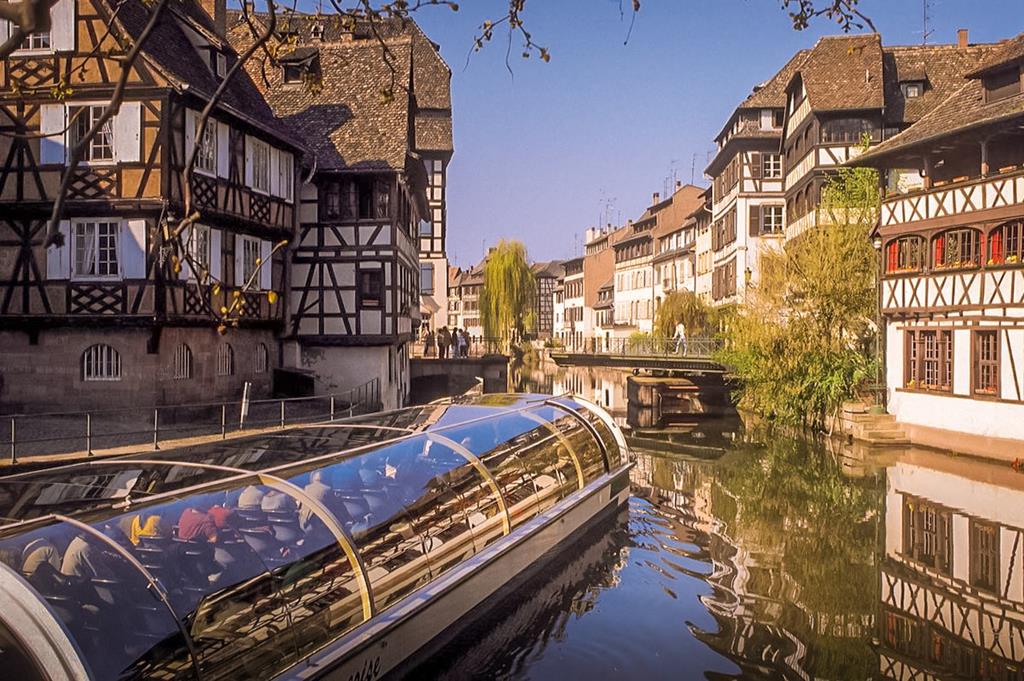
We have presented to you a list of the most stunning places in France. Are you ready for the journey? Before you say “yes”, make sure you have an International Driving Permit. Otherwise, apply for it here. It really is that simple. Just try.

Published February 16, 2018 • 11m to read

